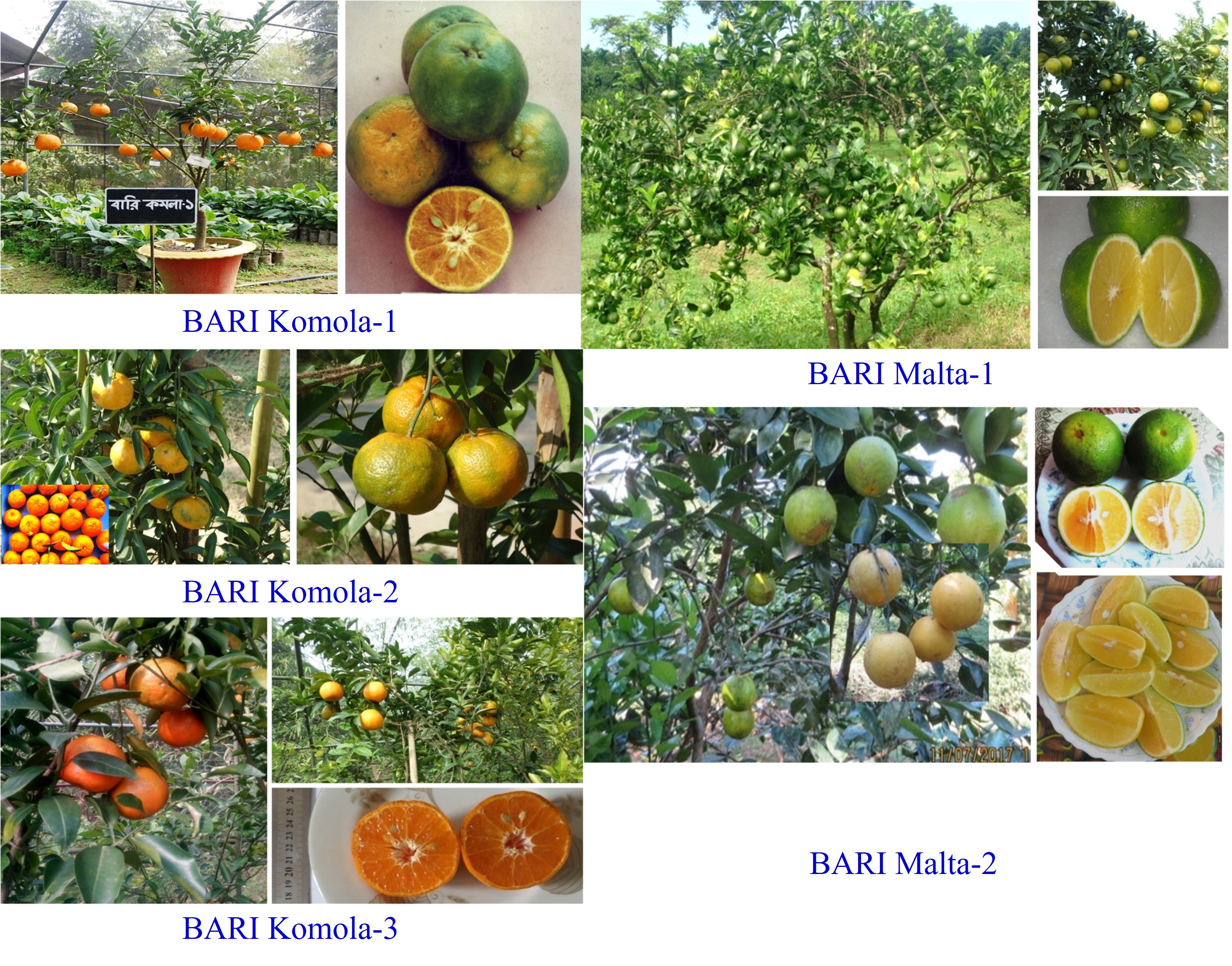Establishment of Disease-free Citrus Sapling Production System in Bangladesh
Citrus fruits stand second after grapes and are cultivated in more than 140 countries. About 53.5% of the world’s total citrus production is grown in Asia. However, the USA is the leader in per hectare yield producing more than 31.0 t ha−1 based on better technology and century-old citrus nursery certification programs. Citrus fruit production is increasing in Bangladesh at an average annual rate of 5.21%. But the poor orchard health led to the decline and early termination of the plant's productive life. Phytophthora sp., Fusarium, Citrus Tristeza Virus (CTV), and Citrus Greening Disease (CGD/HLB) are the major alarming problems. Moreover, the tropical climate favors a high prevalence of disease vectors in Bangladesh (Akter et al. 2019). Further, the incidence of die-back is the highest in sweet pulp citrus. Sour pulp citrus is found highly infected by citrus canker. In the past, the nucellar seedlings were used as a source of disease-free planting material. But, they usually are less tolerant to soil-borne biotic (Gummosis (Phytophthora spp.), Ganoderma root-rot (Ganoderma lucidum), dry root rot (Macrophomina phaseoli, Fusarium spp. and Diplodia natalensis) etc.) and abiotic threats (salinity, drought, flooding, metal/metalloid(s), acidity etc.), hence are grafted on tolerant-resistant rootstocks to provide a better root system. But in this grafting process diseases transmitted to the saplings from the mother plants, declined within a short period of time. Therefore, producing disease-free healthy citrus saplings in-vitro by shoot tip grafting (STG), for growing mother plants as well as foundation blocks under controlled screen houses and routine monitoring of diseases by serological (ELISA) or molecular methods (PCR) are necessary. Besides, precise and rapid disease indexing is indispensable for the maintenance of pathogen-free mother and foundation blocks as well as nursery stock and should be indexed for bacterial and viral diseases routinely. Furthermore, to keep the STG mother and foundation block disease free, they should be conserved in an insect-proof screen-house.
The research methodology including collecting citrus rootstock seeds. Seeds of Pummelo, Rangpur lime, Rough lemon, Calamansi, Cleopatra mandarin, Trifoliate orange were collected from CRS Orchard, Jaintapur, Sylhet and the other seeds of citrus rootstocks (Citrumelo and Citrange) were collected from Regional Agricultural Research Station, Akbarpur, Moulvibazar. The mother plants of BARI Komola-1, BARI Komola-2, BARI Komola-3, BARI Malta-1 and BARI Malta-2 were selected and maintained in the net house of CRS, Jaintapur. The bud-sticks (BARI Komola-1 and BARI Malta-1) were collected from these mother plants and cultured in vitro in the laboratory using MS media for getting micro-shoots, which were used as micro-buds. The seeds of pummelo, rough lemon and Rangpur lime rootstock were also sown in the laboratory by two methods; viz. using MS media solidified with agar, and sterilized coco-peat with liquid MS media. Micro-grafting was performed under a stereo-microscope and the culture tubes containing the micro-grafts were incubated at 20°C, 25°C, and 30°C giving 8/16h, 12/12h and 16/8h L/D condition in liquid MS media. The successes of micro-grafting and scion growth were recorded for each treatment.

